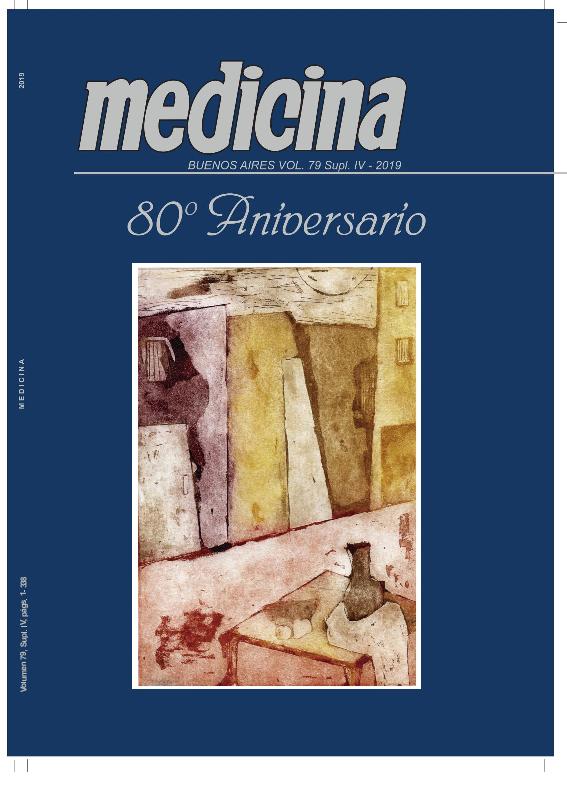Evento
Finding of Fasciola hepatica in a capybara (hydrochaeris hydrochaeris) in Tandil, province of Buenos Aires, Argentina
Tipo del evento:
Reunión
Nombre del evento:
LXIV Reunión Anual de la Sociedad Argentina de Investigación Clínica; LI Reunión Anual de la Asociación Argentina de Farmacología Experimental; XXI Reunión Anual de la Sociedad Argentina de Biología; XXXI Reunión Anual de la Sociedad Argentina de Protozoología; IX Reunión Anual de la Asociación Argentina de Nanomedicinas y VI Reunión Científica Regional de la Asociación Argentina de Ciencia y Tecnología de Anima
Fecha del evento:
13/11/2019
Institución Organizadora:
Sociedad Argentina de Investigación Clínica;
Asociación Argentina de Farmacología Experimental;
Sociedad Argentina de Biología;
Sociedad Argentina de Protozoología;
Asociación Argentina de Nanomedicinas;
Asociación Argentina de Ciencia y Tecnología de Animales de Laboratorio;
Título de la revista:
Medicina (Buenos Aires)
Editorial:
Fundación Revista Medicina
ISSN:
0025-7680
Idioma:
Inglés
Clasificación temática:
Resumen
Fasciolosis is a zoonotic parasitic disease caused by Fasciola hepatica . The life cycle of thisparasite is indirect, it needs a snail of the Lymnaea family as an intermediate host to complete the cycle and sothe occurrence of cases is limited to the presence of these snails. Most of thestudies of this parasitic disease are in domestic animals and humans. Greateconomic losses are generated by this disease. Wild species are known to act asreservoirs and disseminators of the disease. The south-eastern zone of the province of Buenos Aires has been described with reference to the presence of Fasciola spp. in cattle but it is not yet known whether wild herbivores living in the zone are involved in the biological cycle of this disease. Among the wild species that have been positively reported to Fasciola hepatica the capybara, Hydrochaeris hydrochaeris is a poorly described species. In August of the present year, in the district of Tandil(BsAs), a dead capybara recently run over was found. At the macroscopic inspection the liver was apparently normal. At the magnifying glass inspection of the gall bladder, characteristics yellowish eggs were found. They were photographed with the Leica microscope and it can be seen that due to their morphology, size and location they were compatible with >Fasciola hepatica eggs. PCR was performed in search of the mitochondrial gene ITS1 (species indicator) confirming that the eggs found in the capybara belonged to Fasciola hepatica This is attractive for two main reasons; first, in the area where the animal was found there are no scientific reports of this disease or the presence of the snail, which prompts us to work on a more exhaustive search for cases. And secondly, the study of wild species as transmitters of this disease is not well studied and this ends up being a complication for producers and for the population ingeneral, so we consider that its study is very important.
Palabras clave:
FASCIOLA
,
CAPYBARA
,
TANDIL
Archivos asociados
Licencia
Identificadores
Colecciones
Eventos(CIVETAN)
Eventos de CENTRO DE INVESTIGACION VETERINARIA DE TANDIL
Eventos de CENTRO DE INVESTIGACION VETERINARIA DE TANDIL
Citación
Finding of Fasciola hepatica in a capybara (hydrochaeris hydrochaeris) in Tandil, province of Buenos Aires, Argentina; LXIV Reunión Anual de la Sociedad Argentina de Investigación Clínica; LI Reunión Anual de la Asociación Argentina de Farmacología Experimental; XXI Reunión Anual de la Sociedad Argentina de Biología; XXXI Reunión Anual de la Sociedad Argentina de Protozoología; IX Reunión Anual de la Asociación Argentina de Nanomedicinas y VI Reunión Científica Regional de la Asociación Argentina de Ciencia y Tecnología de Anima; Mar del PLata; Argentina; 2019; 230-230
Compartir




